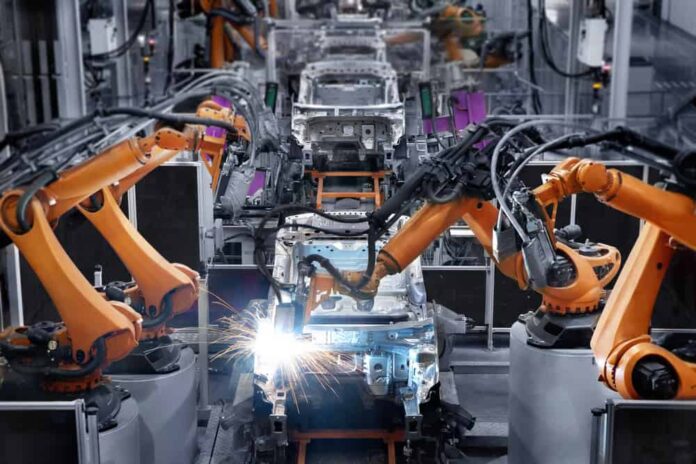Introduction
The landscape of manufacturing is undergoing a radical transformation as a new wave of highly sophisticated robots takes center stage. This shift, exemplified by Philips Electronics’ factory in Drachten, Netherlands, challenges traditional models of production and distribution. Unlike consumer electronics giants such as Apple, which rely heavily on low-skilled human labor, Philips employs 128 robot arms that demonstrate unparalleled flexibility and efficiency in assembling electric shavers.
The Rise of Advanced Robotics
Philips vs. Apple: Divergent Approaches
The approaches taken by Philips and Apple in manufacturing underscore fundamental differences in their strategies, reflecting contrasting philosophies towards automation, labor, and the future of manufacturing.
Philips’ Robotics Symphony in Drachten
In the tranquil Dutch countryside, Philips Electronics operates a manufacturing facility in Drachten that epitomizes the future of industrial production. Here, a striking departure from traditional manufacturing practices is evident. Instead of relying on a large workforce, Philips has embraced automation with the use of 128 robot arms. These machines, guided by video cameras and enclosed in glass cages for safety, perform tasks with a precision and speed that surpass human capabilities.
The assembly line in Drachten stands as a testament to the potential of advanced robotics. It not only highlights the efficiency of automated processes but also emphasizes the adaptability and flexibility of these machines. Unlike conventional assembly lines, the robots at Philips can seamlessly switch between tasks, showcasing a level of sophistication that challenges the status quo of labor-intensive manufacturing.
Apple’s Human-Centric Manufacturing Model
In stark contrast, Apple, a global tech giant, has long been associated with offshore manufacturing, particularly in China. The late Steve Jobs, Apple’s co-founder, candidly acknowledged the reliance on overseas factories during a conversation with President Barack Obama. The core belief at Apple’s executive level is that the scale, diligence, and industrial skills of overseas factories surpass those of their American counterparts. This perspective led to the production of millions of Apple devices, including iPhones and iPads, being outsourced to countries like China.
Apple’s model hinges on large human workforces, often consisting of hundreds of thousands of low-skilled workers. While this approach has been successful in meeting the demand for Apple products, it has also attracted criticism regarding labor conditions and raised questions about the company’s commitment to creating jobs in its home country.
The Broader Implications
The divergence in approaches between Philips and Apple raises broader questions about the future of manufacturing. Philips demonstrates that automation, when implemented thoughtfully, can enhance efficiency, reduce costs, and elevate manufacturing capabilities. On the other hand, Apple’s reliance on human-intensive manufacturing raises concerns about the long-term sustainability of such a model, especially in the face of the rising capabilities and cost-effectiveness of advanced robotics.
Foxconn’s Million Robot Plan
While Apple’s manufacturing partner, Foxconn, continues to expand its workforce, it also plans to deploy over a million robots in its Chinese plants. This strategic move indicates a growing recognition of the benefits of automation, raising questions about the future role of human labor in manufacturing.
The Economic Implications
Impact on Jobs: A Rapid Transformation?
Economists argue that the increasing sophistication and decreasing costs of robots signal a profound economic shift comparable to historical revolutions in agriculture and manufacturing. The potential displacement of jobs raises concerns, but proponents emphasize the historic opportunity for increased productivity.
Job Creation vs. Job Displacement
Government officials and industry leaders stress that, despite automation, advanced manufacturing remains a crucial source of jobs. The debate extends beyond blue-collar roles, highlighting the emergence of skilled positions related to designing, operating, and servicing robotic assembly lines.
Advances in Manufacturing Robotics
Philips’ Assembly Line: A Robotic Symphony
The Philips assembly line in Drachten showcases the capabilities of next-generation robotics. Guided by video cameras, robot arms exhibit precision and speed beyond human capacity. These machines work tirelessly, 24/7, offering a stark contrast to labor-intensive practices in other parts of the world.
Tesla’s Vision: Flexibility in Automation
Tesla’s Fremont factory introduces a new paradigm with highly flexible robots capable of performing multiple functions. The assembly line, brightly lit and technologically advanced, serves as a model for the industry. The integration of robotics in manufacturing is not only about efficiency but also about adaptability.
The Future of Distribution: Rise of the Robots
C & S Wholesale Grocers: A Glimpse into Automated Distribution
In the distribution sector, robots are revolutionizing the way products are stored, retrieved, and packed. C & S Wholesale Grocers, a major grocery distributor, utilizes high-speed robots that outpace human workers in efficiency. This shift in distribution methods underscores the broader impact of robotics on various industries.
The New Warehouse Model
A distribution center near New York City highlights the coexistence of traditional and futuristic systems. Rover robots, resembling go-carts, navigate a compact space, controlled by a centralized computer. This automated approach, while efficient, prompts discussions about job displacement and the evolving nature of the workforce.
Challenges and Considerations
Technical Challenges and Human Resistance
While the potential for universal assembly robots is tantalizing, challenges persist. Bran Ferren, a veteran roboticist, emphasizes the complexities of achieving a truly versatile robotic workforce. Resistance from unionized workers and communities concerned about job loss adds another layer of complexity to the integration of advanced robotics.
The Global Perspective: Competing with Automation
Philips’s CEO, Frans van Houten, recognizes the competitive landscape, suggesting that the window of opportunity for bringing manufacturing back to countries like the United States is limited. As automation becomes a global trend, nations must strategically position themselves in the race for advanced manufacturing capabilities.
Conclusion
As advanced robotics reshape the manufacturing and distribution landscape, questions about job displacement, economic implications, and the role of humans in a robotic future become paramount. The choices made by industry leaders and policymakers will not only influence the trajectory of individual companies but also shape the broader global economy. The robotic revolution is here, and navigating its complexities requires a delicate balance between technological progress and the human workforce’s well-being.










